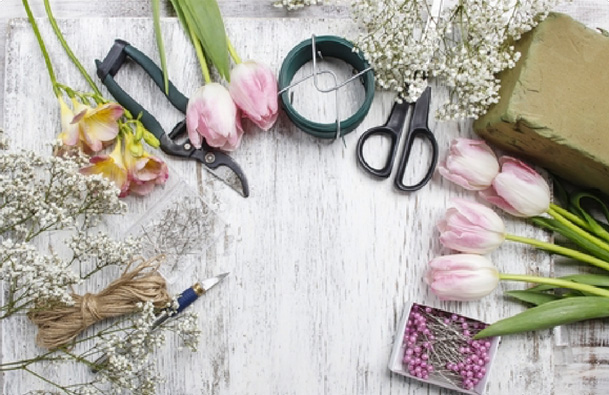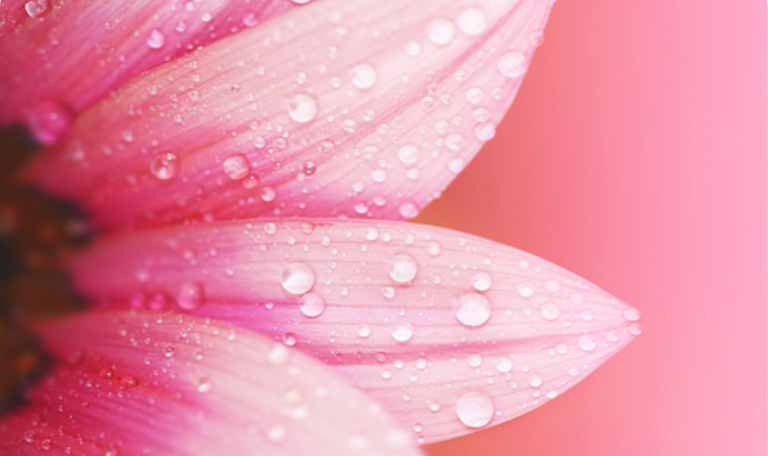One of the things that separate master florists from everyone else are the set of tools they keep in their bags. We spoke to some of our favorite master florists to find out what are their list of ‘must-haves’.
Have you ever used any of these? Did they work for you and what would you like to add to our list
and help another florist?

-
Floral spray- This is a spray solution that keeps flowers fresher for longer by holding in moisture, reducing water loss and keeping flowers more vibrant. It comes in three general different types depending on the need.
-
Floral spray- This is a spray solution that keeps flowers fresher for longer by holding in moisture, reducing water loss and keeping flowers more vibrant. It comes in three general different types depending on the need.
-
This type contains nutrients that the flower absorbs through its petals and leaves. It is light and allows flowers to ‘breathe’ and to continue to take up water and flower food. Best used with flowers that have a water source like vases or floral foam.
-
The second type is a waxy moisture barrier that holds in moisture and adds luster to floral arrangements. It works best with flowers with a limited or no water source like corsages, wristlets, boutonnieres and kissing balls.
-
The last type adds a non-oily shine to plants and can be used on leaves but not on flowers. Best used to add shine to leaves and greeneries like potted plants. It will also help remove water spots and keep leaves dust-free. Other random uses include:
-
Useful for removing glue and scum when you clean your hands.
-
Spray it on your glue cap to prevent it from gluing shut.
-
Also useful for keeping stainless steel appliances shiny.
-
Alum powder- This is short for aluminum potassium sulfate, a crystalline powder usually found in the grocery store spice section. When arranging flowers, particularly hydrangeas, first re-cut the stem and dip the bottom ½ inch of the cut flower stems in the powder. After this, proceed to arrange the flowers as usual in water. The water might wash off most of the alum powder, but the method works and will keep hydrangeas gorgeous and wilt free for longer.
-
Florist wire- This is a flexible aluminum wire often coated with a thin layer of colored paint, usually green to help it blend with foliage. It is measured in thickness or gauges with the lower the gauge the thicker and less flexible the wire gets. Comes package as pre-cut pieces called wire stems or as spools/paddles sold by weight or length.
16- 18 gauge wire can be used to provide great support for flowers with heavy heads like daisies by carefully threading the wire into the flower stem avoiding puncturing the side of the stem, lengthening stems if they are accidentally cut too short, binding florist netting around the floral foam and securing floral foam into a container.
21-22 gauge wire can be used to secure bows
26 gauge wire is primarily used to make corsages and boutonnieres.

-
Floral foam- Makes a great base or foundation for floral arrangements and gives design stability and flexibility. The foam contains air-filled cells that fill with water causing the foam to naturally sink into the water as it saturates. Do not press the foam to submerge it as this can create air pockets in the foam and any flower stems reaching this dry pocket will not have a water source.
It comes in different types, shapes, and densities depending on the flower type and requirements.
-
Light density- Works best for softer stems like tulips, iris, and other spring flowers. With softer stems do not pre-poke holes as this results in poor stem to foam contact causing flowers to wilt due to poor hydration.
-
Medium-density- Suitable for most flower types like roses, carnations, and lilies. It can be either standard or instant.
-
Higher density- Adequately holds large and sturdy stems, can be used for all flower types. Can be either standard or instant.
-
Instant- Medium or higher density with pre-cut holes for faster hydration.
Floral foam can come in different shapes that save time on cutting. It comes in standard shapes like bricks, spheres, cones, wreaths and also novelty shapes like hearts, footballs and even shoes. For custom shapes, you can purchase floral foam sheets that can be cut into custom designs.
Floral foam also comes in different colours with green being the standard colour, dark grey darkens to grey and rainbow which ranges from yellow to pink.
To use floral foam, cut out the required form and soak it in water, then add trimmed stems to the foam making sure not to push the stems all the way through. Do not crush or press the form in its dry state as this destroys its ability to hold water.

-
Water spritzer- Clever way to keep help extend vase life. Flowers absorb water from more than their stems. For effective spritzing here are a few helpful rules to follow:
- Only use water to avoid clogging the petal pores
- Hold your spray bottle about 15 to 30cm away from the blooms when you spray them. This will ensure that the flowers will get a light, even coverage and prevent overhydration.
- Use a bottle that ‘mists’ and not one that squirts streams of water. It should leave petals with a light dewy layer and not dripping.
- Misting is a complement to water and nutrients in the vase so there is no need to water more than once a day. Although, it also helps to know which flowers enjoy extra hydration more than others. Orchids and hydrangeas for example generally enjoy the extra moisture from misting.
-
Mirror- use your reflection when designing your flower arrangement to help attain balance, proportion and or symmetry.
-
Fiji nets- place them gently over the head of peonies to pause them from blooming.
-
Flower clipper- use a sharp pair of good quality clippers, specifically dedicated for that use, to cut stems.
-
Floral glue- Useful for styling any kind of wearable flowers like corsages and boutonnieres. Has the added bonus of drying super-fast.
-
Liners- for events, use plastic liners as substitutes for your vases so you can pack up and leave early, but leave the flowers for guest to enjoy or even take home.
-
Adhesive support hooks- useful where you need added support for garlands or any arrangement that might need it without making permanent structural adjustments.
-
Zip ties- Helpful for adding support for archways and general installation support.
-
Rose stripper- carefully strips the stem without damaging the stem







